An Analysis of Climate Change and Why it Cannot be Controlled
“There is no science out there, or no scenario out there, that says that the phase-out of fossil fuel is what’s going to achieve 1.5C.” [ Dr Ahmed Al-Jaber, COP28 president ]
Erroneous CO2 Claims
Net-Zero will be Ineffective
Climate Change is in Prophecy
Summary
Undeniable Truth: Natural Climate Change
Large Temperature Swings

Figure 1: Greenland Ice Core Data (NOAA)
Figure 1 shows temperature changes since the last Ice Age. The graph is from ice core data of the Greenland Ice Sheet. Greenland ice core temperature data is directly related to global temperature records, and provides a vital window into past climate changes and trends.
Note the temperature swings in Figure 1 are typically 1.5 degree C and occur rapidly over some 100 years. The swings are natural and clearly cannot be from anthropogenic CO2! Swing 10 corresponds to recent climate change over some 150 years. Is this also natural, or is it largely anthropogenic (CO2) warming, as some claim?
CO2 Change over 10,000 Years
Changes in past atmospheric CO2 concentrations can be determined by measuring the composition of air trapped in ice cores from Antarctica (the EPICA project is the European Project for Ice Coring in Antarctica). In Figure 2 the EPICA Dome C Ice Core data indicates that CO2 levels slowly varied during the last 10,000 years, initially decreasing from 270 to 260 ppm, then slowly rising to 280 ppm before the Industrial Revolution. Figure 2 also shows the same temperature data in Figure 1 but now related to atmospheric CO2. Clearly, the rapid temperature changes over the past 4,000 years, including the current warming, do not appear to be correlated with relatively slow CO2 change.

Figure 2: Atmospheric CO2 changes (Climate4you )
Some studies suggest that CO2 levels may have lagged behind rising global temperatures during the end of the last ice age, by as much as 1,400 years. Does this suggest that CO2 rise is not a prime causal factor in global warming (see later)?
Sea Level Change
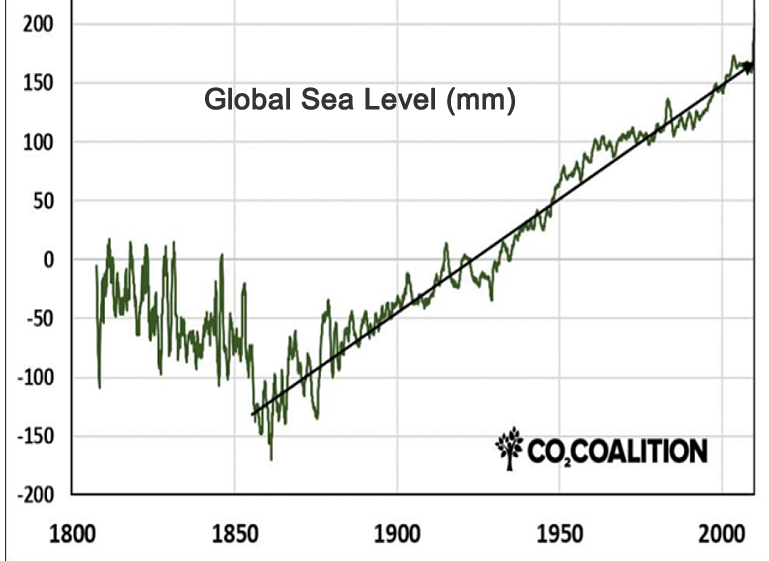
Figure 3: Global Sea Level [ sciencedirect ]
Figure 3 shows global sea level change from 1807 to 2010, based on 1277 tide gauge records. It includes data from the polar regions. Between 1993–2009 there is a good agreement between the rate of sea level rise calculated from satellite altimetry and the rate from tide gauges. Important points:
- Sea level rise started well before industrialisation (and hence anthropogenic CO2 rise) around 1950.
- There is a linear trend of about 2 mm/year during the 20th century, link. If anthropogenic CO2 rise causes warming, it might be expected that sea level would rise in a non-linear way from around 1950. It didn’t.
Note that sea level has risen by over 100m over thousands of years as the world emerged from the last ice age. The rise levelled-off some 6,000 years ago. So the relatively small rise of about 20 cm since 1850 appears natural [scienceunderattack.com, 2019].
Glacier Shortening

Figure 4: Glacier Shortening [ Robinson et al ]
Figure 4 shows the average length of 169 glaciers from 1700 to 2000. It is claimed the principal source of melt energy is solar radiation. As for sea level rise, shortening started well before industrialisation around 1950, and so it is claimed that hydrocarbon use could not have caused this shortening trend, link.
What Causes Natural Climate Change?
Past swings in global temperature have been attributed to natural factors, such as:
- Changes in earth’s orbit: variations in the geometry of Earth’s axis and its orbit around the Sun. Three changes in the Earth’s orbit — eccentricity, axial tilt, and precession — are collectively called ‘Milankovitch cycles’. These are thought to be a major driver of Earth’s long-term climate changes, including ice ages.
- Atlantic and Pacific Oscillations: Ocean temperature changes like the Atlantic Multidecadal Oscillation (AMO) and the Pacific Decadal Oscillation (PDO) follow an approximate 60 year cycle of warming and cooling. These oscillations can affect air temperatures and precipitation patterns, and indirectly influence the global climate. A warm Pacific has been found to be accompanied by more El Ninos and global warming.
- Gradual Warming: Few realise that the global temperature has been rising naturally at a steady rate of 0.5°C per century since the end of the little ice age in the 1700s (see Fig.10 at sciencespeak). So much of the 0.8°C rise over the 20th century was to be expected!
- Solar Changes: The energy output of the Sun is not constant: it varies over time. Increased solar activity (increased sun spot number, SSN) results in reduced cloud cover and warming.
So is it the Sun?
The sun’s irradiance (in Watts/m2) fluctuates constantly in conjunction with the sunspot number (SSN), and varies over an approximate 11 year cycle. Solar cycle 24 peaked around 2013 and cycle 25 is expected to peak around 2025, link. NASA and the Intergovernmental Panel on Climate Change (IPCC) reject the significance of solar activity on global warming, at least in the last few decades of the last century, link.
On the other hand, many scientists still link climate change to “solar forcing”, link:
So some maintain that climate change observed during the 20th century could be partly due to increased solar activity and the resulting reduced cloud cover:
“Possibly excluding the most recent decades, much of the warming of the past century can be quantitatively accounted for by the direct and indirect effects of solar activity” [ Bago and Butler, 2000]
It has been shown that more sunspots (as in the last decades of the 20th century, link) deliver more energy (irradiance) to the atmosphere, and temperatures rise. Conversely, between 1790 and 1820, a decline in SSN (the Dalton Minimum) correlated with lower global temperatures. Figure 5 shows the high correlation between SSN and mean Sea Surface Temperature (SST) between 1880 and 1980. Similarly, Joseph D’Aleo found:
“US annual temperatures over the last century (1900-2007) correlate better with cycles in the oceans and the sun than with carbon dioxide: R-squared correlation with oceans 0.85, R-squared correlation with CO2 0.43″
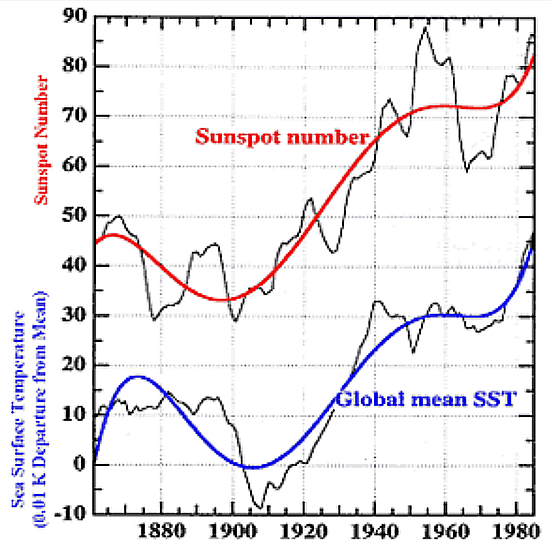
Figure 5: Correlation of SSN and mean SST [ Prof. Giora Shaviv 2016 ]
Clearly, despite the view of NASA and the IPCC, it seems natural factors, particularly the sun, are having a significant effect upon climate change – even after industrialisation after 1950.
The Climate Intelligence Foundation, CLINTEL
CLINTEL is an international team of over 1500 scientists, including some Nobel Laureates. They dispute the climate change consensus claimed by the IPCC – see later. CLINTEL has analysed the Physical Science Basis of IPCC report AR6 and claim it is biased, selective, and contains serious errors (see Video). So CLINTEL claim:
There is no climate emergency – natural as well as anthropogenic factors are causing warming.
To back up CLINTEL”s assertions, consider the following U.S. data, which suggests “normality” in the climate:
Despite the fact that CO2 is now 50% higher than it was before the Industrial Revolution, and despite a 1.2 degree C rise in average global temperature, some weather data seems normal. For example, the Annual Heatwave Index for the United States from 1880 to 2020 shows no significant change, apart from a transient increase around 1930 [data: NOAA via the US EPA]. And between 1895 and 2020 there was no overall increase in U.S. droughts, [ NOAA, 2021 ]. Similarly, between 1910 and 2020 there was no significant change in heavy precipitation measured over 48 U.S. states (noting that 1998 was a strong El-Nino year), [ NOAA, 2021 ].
Also, there is no strong evidence for an increase in Atlantic hurricanes, or U.S. land-falling hurricanes, since the late 1800s. It is premature to conclude that anthropogenic increases in greenhouse gases have caused a change in past Atlantic basin hurricane activity [https://www.gfdl.noaa.gov/, 2023].
Some Climate Change Facts
Of course, recent climate change is undeniable. For example, since about 1880:
- The world warmed by about 1.1 degree C [NASA]
- Most glaciers retreated; mean annual retreat about 20m [wikipedia.org]
- Global mean sea level rose about 9 inches (2 or 3mm/year) [climate.gov]
- Water tables fell significantly (China: 1.5m/year, India: 1-3m/year)
- The area of land surface affected by extreme drought has trebled since the 1980s [BBC World Service]]
- Weather related disasters increased by a factor of 5 over the past 50 years [WMO, 2021]
Whatever is causing such climate change (natural or otherwise) it is widely agreed that this is having devastating consequences, like the destruction of homes, the loss of livelihoods and the fragmentation of communities, IPCC AR6 2023. For instance, as the climate warms there will be an increase in extreme weather events [BBC 2024] ]. For every 1 degree C rise in average temperature, the atmosphere can hold up to around 7% more moisture – so increasing the risk of extreme rainfall.
A Word of Caution: The World Meteorological Organization (WMO) claimed 2024 to be the warmest year since global records began in 1850, link. But note that 2023/4 was approaching the next solar maximum, and saw the most powerful solar storm in more than 20 years strike the Earth’s atmosphere, link. In turn this reduced cloud cover and increased warming. At the same time, 2023 saw a “historically strong” El Nino, resulting in a 2 degree rise in sea surface temperature in the tropical Pacific region, link. These two factors should be born in mind when claiming anthropogenic CO2 is the primary problem.
Now for the Deception:
The Climate Change “Consensus”
The official scientific consensus claims that human-caused climate change (anthropogenic warming) is happening. To quote NASA:
Multiple studies published in peer-reviewed scientific journals show that climate-warming trends over the past century are extremely likely due to human activities. [NASA]
The vast majority of actively publishing climate scientists (97%) agree that humans are causing global warming and climate change [NASA]
So according to NASA, the influence of human activity on the warming of the climate system has now evolved from theory to established fact. Over the last century, burning of fossil fuels like coal and oil has increased the concentration of atmospheric carbon dioxide (CO2), and it is claimed that such human influence is the principal driver of many climatic changes. That said, some challenge the official 97% scientific consensus, link, link.
Controversial Points about Climate Change
The impact on climate of the CO2 emitted by burning of fossil fuels is a long-standing debate. Anthropogenic warming can be challenged from several aspects. For example, dangerous anthropogenic warming is questioned upon recognition of the large amplitude of a natural 60–year cyclic component, link. This cycle appears in phase with the Atlantic Multidecadal Oscillation (AMO). But there are more serious questions:
HIGH SIGNIFICANCE OF CLOUD COVER
Cloud cover/modelling is one of the key factors determining whether we have global warming or global cooling. An active sun (as in the last decades of the 20th century) means less low clouds and higher temperatures, link, link. Conversely, during solar minima (few sunspots) the weaker magnetic field allows more cosmic rays to Earth. Cosmic rays create aerosols which then seed clouds. So a solar minima means more low clouds.
The earliest observational studies of heat transfer through Earth’s atmosphere, for example, those of John Leslie around 1800, showed that clouds have a large effect on radiative heat transfer from Earth’s surface to space. See Radiation Transport in Clouds. Greenhouse gases also affect heat transfer, but much less than clouds. For example, “instantaneously doubling” concentrations of CO2 – a 100% increase – only decreases radiation to space by about 1% (implying slight warming). But to increase solar heating of the Earth by a few percent, low cloud cover only needs to decrease by a few percent, link.
CO2 IS NOT THE CAUSAL FACTOR
CO2 is not responsible for heating the earth, the cause is the activity of the sun. The movement of the sun affects temperature, which influences the levels of CO2, and these levels have risen and fallen for centuries.
[Professor Emeritus Giora Shaviv, professor of physics and the Swartzmann-Medvedi chair in Space Sciences at The Technion in Haifa]
The IPCC claims that CO2 rise causes temperature rise i.e. CO2 is the causal factor. This is not what is observed. Ice core data shows CO2 change lagging temperature change. Typically, atmospheric CO2 didn’t begin to rise until 400 to 1,000 years after the planet began to warm, link. Similarly, modern data shows changes in global atmospheric CO2 lag global surface air temperature by typically 10 months, link. So clearly, temperature rise due to anthropogenic CO2 rise would seem hard to detect since temperature rises first. Also, as shown in Figure 1, Greenland ice sheet air temperature fluctuations show no correlation with atmospheric CO2 changes, link.
It is claimed the IPCC computer models are the only place in the world where a CO2 increase precedes and causes a temperature change, link.
CO2 MODEL ERRORS – HOT MODELS
Many claim there are serious problems with CO2 modelling. For example: take so-called “Hot Climate Prediction”, Figure 6. When tropospheric temperature (TMT) from satellites and radiosondes is compared to the latest (CMIP6) model predictions, the models typically predict significantly higher temperatures from 2000 onwards, link. It is claimed that most model temperature forecasts are excessive compared with accurate satellite measurements [Scaffeta, 2022].
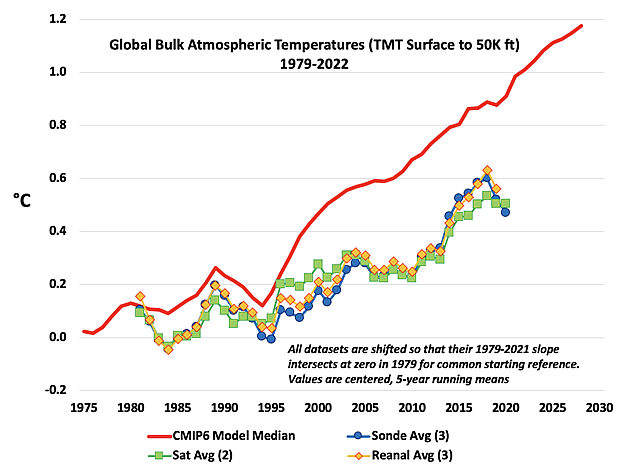
Figure 6: Atmospheric Warming v CMIP6 models. Graph: J. Christy [ Climate at a glance ] Enlarge
Some go further and claim the CO2 climate warming theory is simply wrong!
“The reason why the CO2 atmosphere theory can never work is that the ocean-atmosphere interface controls the amount of CO2 in air. Ocean temperatures control atmospheric CO2 levels – a warmer ocean (which holds 50x more CO2 than the atmosphere) emits CO2 and vice versa. Millions of years of data show that ocean temperature changes lead atmospheric CO2 changes” [ see “Why CO2 Theory Fails” at WeatherAction ]
So some climate scientists claim that the Anthropogenic Global Warming (AGW) theory itself is seriously flawed. They claim that CO2 cannot possibly be the main cause of global warming, link, link, link, link, link, link. For example, IPCC models predict a “temperature hotspot” some 10-12 km in the air above the tropics. But radiosonde data contains no trace of such a hotspot. Some attribute the error to IPCC modelling of water vapour feedback, which in turn results in excessive temperature predictions.
THE SATURATED GREENHOUSE EFFECT (GHE)
The CO2-temperature relationship is nonlinear, link. So as more and more CO2 is added to the atmosphere the warming effect saturates (‘flat-lines’). The atmosphere maintains a “saturated greenhouse effect” controlled by water vapor content. That is, adding CO2 to the atmosphere just replaces an equivalent amount of water vapour to maintain a near-constant greenhouse effect, link. For example, doubling CO2 concentration from its 2015 level of 400 ppm to 800 ppm will increase its radiative forcing (the difference between incoming solar radiation and outgoing terrestrial radiation) by just 1%, link, link. This explains why there was no runaway greenhouse warming when the concentration of CO2 was approaching 20 times that of today, link.
It is claimed that about 4% of atmospheric CO2 is anthropogenic, the rest is natural, link. The UK contribution to this 4% is about 1%, link, or just 0.04% of total atmospheric CO2.
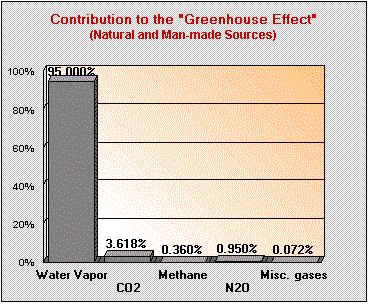
Figure 7: GHE of total CO2 when water vapour is included. Monte Hieb 2007, CO2 Controversy.
But it is not sufficient to merely quote the relative percentages of these gases since they are not equal in their heat-retention properties. Percentage concentrations must be changed to percentage contributions to GHE, link, link. Figure 7 shows that the GHE of all CO2 (both anthropogenic and natural) is only about 3.6% of the total greenhouse effect (2007 data), and is totally dwarfed by the GHE of water vapour (about 95%). So noting that anthropogenic CO2 is only about 4% of the total atmospheric CO2, then the contribution of anthropogenic CO2 to GHE is only about 3.6 x 0.04 = 0.14% when water vapour is accounted for, link.
INVALID CARBON CYCLE MODELLING
It is claimed the IPCC uses three ways to demonstrate the apparent atmospheric CO2 increase is anthropogenic. These are (1) CO2 measurements from ice cores; (2) CO2 measurements in air; and (3) carbon isotope data in conjunction with carbon cycle modelling. All three methods are discussed and rejected, Segalstad, University of Oslo.
But both radioactive and stable carbon isotopes show that the real atmospheric CO2 lifetime is only about 5 years, and that the amount of fossil-fuel CO2 in the atmosphere is maximum 4%. Any CO2 level rise beyond this can only come from a much larger, but natural, carbon reservoir – namely from the ocean. So it is claimed the IPCC’s GHE agenda rests on invalid presumptions and a rejectable non-realistic carbon cycle modelling.
SIMPLE STATISTICS
Leaving aside the science, we can note that CO2 is a trace gas and amounts to just 0.04% of the atmosphere. Anthropogenic CO2 is just 4% of this 0.04%, or about 0.0016% of the atmosphere. CO2 warming theory insists that small changes to this 0.0016% are causing a climatic disaster! Does this make sense?
For more on climate modelling problems, see Issues on Climate Modelling
The Net-Zero Trap
If CO2 Anthropogenic Global Warming (AGW) theory is seriously flawed, then how can man control climate change? Is the media driven more by politics than real science, link? Is the Net-Zero philosophy meaningless? Is there a Net-Zero trap ? After all, analysis shows that Net-Zero will have little effect on temperature (note the preceding discussion showed that all anthropogenic gases only contribute about 0.3% to the GHE):
For worldwide net zero emissions by 2050 and the 4-times larger IPCC climate sensitivity, the averted warming would (only) be 0.28 degree C [ co2coalition, June 2024 ]
There is no science out there, or no scenario out there, that says that the phase-out of fossil fuel is what’s going to achieve 1.5C [ Dr Ahmed Al-Jaber, COP28 president ]
The Astronomical Cost of Net-Zero
Suppose world governments assume the IPCC CO2 warming models are correct and adopt Net-Zero policies. It turns out that the task of completely eliminating the use of fossil fuels by 2050 comes at an astronomical price tag. According to Climate Change Economics [2023] and the Hoover Institution the cost is estimated at over $200 trillion! Imagine the political turmoil!
Consider the UK case:
Net-Zero Carbon Does Not Make Sense
It is also interesting to note that energy from renewables can fail completely. In November-December 2023 UK temperatures dropped to -10 degree C. At the same times the wind dropped and the sun failed to shine. So it was necessary to use fossil fuel power stations!
Concluding: the Net-Zero policy will have a trivial effect on global temperature, but a disastrous effect on the world economy.
Climate Change is in Prophecy
Apart from anthropogenic CO2 and natural changes, there is a third factor to consider. Consider the climate/weather promise in Genesis:
While the earth remains, seed time and harvest, cold and heat, summer and winter, day and night shall not cease (Genesis 8:22)
It seems that God intended the natural cycle of things (heat and cold) to continue. Nothing special was meant to happen to the climate whilst man is around. Put another way, according to the Bible, any change in the climate would seem to be natural. For example, natural solar irradiance change e.g. very low sunspot activity has been associated with climate change. Between 1790 and 1820, a decline in solar activity called the Dalton Minimum correlated with lower global temperatures.
That said, despite God’s promise of natural variations in Genesis 8, it seems man may well be upsetting God’s natural order of things. Regular rains, or regular freezing for example are no longer observed. Is God using climate change and extreme weather to speak to the rebellious nations – like Godless Britain, for example? Has God intervened in the past, and will God intervene in the future? There are good examples of God’s intervention in the scriptures. See Bible prophecy.
“There is no science out there, or no scenario out there, that says that the phase-out of fossil fuel is what’s going to achieve 1.5C.” [ Dr Ahmed Al-Jaber, COP28 president ]
Summarising
Can Net-Zero Control Climate Change?
Probably not. Consider three major contenders for climate change:
- First: The much publicised IPCC climate change “consensus”: “climate change is mainly caused by anthropogenic CO2“. Really? Even accounting for all anthropogenic greenhouse sources, man’s contribution to the greenhouse effect is still very small. Adding up all anthropogenic greenhouse sources, the total human contribution to the greenhouse effect is only around 0.3% (after factoring in water vapor). Put another way, it is claimed that even if the whole world achieved Net Zero emissions by 2050, the averted warming would only be about 0.3 degree C [ CO2 Coalition ].
- Secondly: Climate changes naturally. Greenland ice core data shows natural swings of several degree C since the last ice age – with no correlation to CO2 change (see Fig.1). So a 1 degree C change over the 20th century is quite normal. Conversely, between 1880 and 1980 there is good correlation (see Fig.59 of this link) between sunspot number (SSN) and global mean sea surface temperature (SST). The effect of the sun cannot be ignored.
- Lastly, Bible prophecy says quite clearly that God will use climate change, particularly extreme weather events, to gain the attention of the rebellious nations. This has happened in the past and it will happen towards the end of the age. It seems God has the last word when it comes to extreme weather.
Conclusion
Net-Zero will be ineffective: It’s God’s Weather!
Given the scientific controversy over the cause of climate change, why not turn to Bible prophecy? End-time prophecy has serious things to say about future extreme weather and implies that that the nations will not be able to control climate change/extreme weather through the control of CO2.
It seems it is God, not man, who has final control over the climate and related weather events!
Examples of Recent Extreme Weather
EXTREME WINDS: 2013 will be remembered for apocalyptic weather across the globe. Super typhoon Haiyan hit the eastern Philippines with maximum sustained winds of 195 mph and gusts to 235 mph – one of the most powerful storms ever recorded. Powerful tornadoes carved a path of destruction across the US Midwest, with Washington being hit by winds of up to 200 mph.
EXTREME RAINS: As the climate warms, studies have shown that for every one degree Celsius rise, there is an additional 15% increase in extreme rain at high elevation [nature.com, 2023]. In January 2014 southern Britain saw its wettest winter month on record, and saw its largest wave ever (75 feet)! The highest ever rainfall recorded in UK was in December 2015 at Honister Pass in Lake District with 341.4 mm falling in 24 hours. In July 2021, Zhengzhou (China) had over 550 mm in just 24 hours. In April 2024 some regions in the United Arab Emirates (UAE) witnessed the heaviest rainfall for 75 years. Some regions reported more rain in a single day than they usually received in an entire year.
EXTREME DROUGHT: Australia’s “Millennium” drought began in 1995 and continued country-wide until late 2009. Desalination plants were built to partially combat the extreme drought. The European Commission Joint Research Centre (EC-JRC) warned that the 2022 drought could be the worst in 500 years, potentially reaching 47% of the continent, [euronews.com]. Nowhere on Earth are groundwater declines greater than in northern India. NASA attributed this to large-scale irrigation, and today 54% of India faces extremely high water stress [wri.org ]
EXTREME HEAT: The Pacific north-west has warmed by about 1.7C in the past 50 years (much more than the global average), and in 2021 this contributed to historic heatwaves in California and parts of Canada. British Columbia reached 46C, Las Vegas reached 47C, Palm Springs reached 49C, and California’s Death Valley reached 53C (although this is lower than the 57C recorded in Furnace Creek in 1913). April 2022 was the third-hottest April India has seen in the past 122 years (1901 to 2022). Such unusual, early heat waves were made 30 times more likely due to the direct impact of climate change, [World Weather Attribution Network (WWAN)].
EXTREME COLD: In 2010 the UK had the coldest December for 100 years [UK Met Office]. In 2018 (‘the beast from the east’) thick snow blanketed the UK and brought the average March temperature down a whole seven degrees. Rural areas experienced temperature lows of -12°C. In February 2021 Scotland experienced -23°C, and Texas had rare extreme cold – colder than Alaska! In late January 2023 temperatures in Mohe northern China plummeted to -53°C, the lowest ever recorded in China. Record low temperatures hit the northeast USA early February 2023. Scientists claim arctic warming is creating more polar vortex events [CNN]. In May 2023 Antarctica experienced a new record low for early winter (-75°C) [weatherandradar.co.uk ].
EXTREME SNOW: In mid-April 2022, a major blizzard dumped feet of snow on North Dakota, USA. The highest snowfall was in south west Montana which received nearly four feet of snow. Forecasters were warning of a “storm of the century”. On Tuesday 12 April the temperature plummeted to 10 degrees Fahrenheit, making it the coldest day in April since 1986. In November 2022, the snow mass in the northern hemisphere was beyond the highest ever observed [www.severe-weather.eu ].
SUCESSIVE EXTREMES: The UK has seen three extreme Februaries in succession. February 2019 saw a winter heatwave when London reached 21.2 degrees C. The following February was the wettest on record in England. And February 2021 saw minus 23 degrees C in Scotland and the river Thames froze over for the first time since 1963.
EXTREME COST: These events come at extreme cost. By 2020 the US had sustained 273 weather and climate disasters since 1980 where overall damages/costs reached or exceeded $1 billion. NOAA claim the total cost of these 273 events exceeds $1.790 trillion, link. Scientists blame ‘an unlucky combination of global warming and freak chance’!
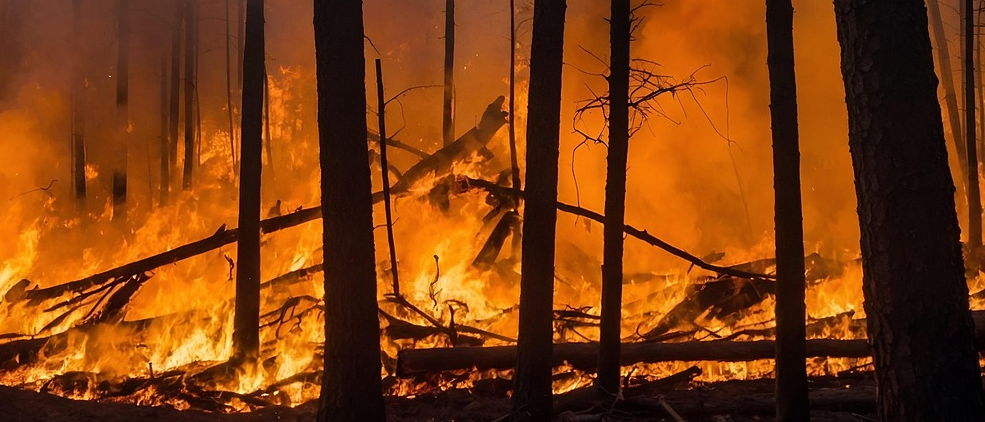
Be First to Comment